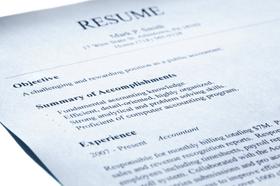So Many Choices (2025 Edition)
Selecting a private school can feel overwhelming. With hundreds of options across the U.S., from boarding to day, religious to non-sectarian, and traditional to progressive, parents often feel paralyzed by the sheer number of decisions. Yet by breaking down the process into manageable steps, families can make informed, confident choices about where their child will thrive.
In 2025, the private school landscape continues to evolve. Tuition costs are higher, financial aid options are more robust, and schools are placing greater emphasis on diversity, inclusion, and whole-child education. Let’s walk through the essential questions every family should ask.
Boarding School or Day School?
This is often the first—and hardest—question parents face. The difference isn’t simply about where a child sleeps; it shapes the entire educational and social experience.
In 2025, boarding schools typically range from $65,000 to $75,000 annually, while day schools average between $15,000 and $35,000, depending on location and grade level, according to the National Association of Independent Schools (NAIS). While these figures may seem daunting, most boarding schools offer substantial financial aid, with nearly one-third of students receiving need-based assistance.
Letting go emotionally can be as challenging as managing tuition. “Parents often underestimate how quickly students adapt to a structured boarding environment,” notes Dr. Emily Chen, an educational psychologist and former boarding school dean. “Teens benefit from consistent mentorship, peer support, and independence—skills that serve them well in college and beyond.”
For families balancing demanding careers, boarding school can also provide stability. With 24/7 supervision, structured study time, and extracurricular engagement, boarding schools create a supportive framework many households struggle to replicate.
Religious or Non-Sectarian?
Religion remains a central factor in many families’ decisions. Private schools fall broadly into three categories:
Faith-immersive schools – Religion is at the heart of daily life. Attendance at chapel or religious study is mandatory.
Faith-affiliated schools with light observance – Religious traditions are present but less central.
Non-sectarian schools – No formal religious affiliation, though values-based education often remains a priority.
The choice often comes down to how strongly a family wants their child’s education aligned with faith. For example, Jesuit, Quaker, and Jewish day schools integrate spiritual practices into academics and community life. Meanwhile, non-sectarian schools focus on ethics, service, and global perspectives without denominational alignment.
As one parent, Mr. Alvarez, reflected after enrolling his daughter in a Quaker school: “We weren’t looking for dogma—we wanted reflection, mindfulness, and community service. The religious element wasn’t restrictive; it was grounding.”
Families should ask: How central is religion to the school’s mission? How does it shape daily routines, from classes to community service?
Large or Small?
School size matters—not just in terms of student body, but in how it shapes culture.
Small schools (150–300 students) foster close-knit communities where everyone knows each other.
Medium-sized schools (300–500 students) offer balance, with intimacy alongside more extracurricular opportunities.
Large schools (800–1,200 students) provide broad course catalogs, extensive athletics, and varied peer groups.
Regardless of size, small class ratios remain a cornerstone of private education. In 2025, the average class size is 12–15 students, ensuring individualized attention.
Many large schools also use a house system, dividing the community into smaller groups for mentoring, competition, and collaboration. This system, common in both U.S. boarding and day schools, builds belonging even within a large student body.
Visiting in person remains essential. “Parents sometimes assume large means impersonal, but once you see the house system in action, you realize how intentional community-building can be,” says Jonathan Reyes, Head of Admissions at a New England boarding school.
Traditional or Progressive?
Educational philosophy is another defining choice.
Traditional schools emphasize structured curricula, frequent testing, and preparation for standardized exams.
Progressive schools—such as Montessori, Waldorf, or project-based learning academies—prioritize creativity, collaboration, and experiential learning.
Both prepare students for college, though in different ways. A 2024 study in the Wall Street Journal found that progressive-school graduates performed equally well in college but demonstrated higher adaptability and problem-solving skills compared to peers from traditional schools.
The Putney School in Vermont, for example, is a progressive boarding school where students learn through arts, farming, and student-led governance. Alumni report entering college with strong independence and leadership skills.
Still, families must consider fit. If a student thrives on structure and external motivation, a traditional school may be better. For self-directed learners, progressive environments can be transformative.
Financial Aid and Accessibility
Cost remains one of the biggest barriers for families considering private schools. In 2025, the average financial aid award covers 40–45% of tuition at NAIS member schools. Some schools meet full demonstrated need, while others focus on merit scholarships.
Parents should also consider hidden costs: uniforms, travel, extracurricular fees, and summer programs. A Forbes analysis in 2025 noted that total annual costs for elite boarding schools can exceed $80,000 when factoring in extras.
That said, many families are surprised by how generous aid can be. “We assumed we couldn’t afford it,” recalls Mrs. Grant, whose son attends a New England prep school. “But the aid package cut tuition by half. The process was detailed but worth it.”
Families can find resources on affordability through the U.S. Department of Education and independent school financial aid portals.
Diversity, Equity, and Inclusion (DEI)
Private schools have made significant strides in expanding diversity. As of 2025, students of color make up nearly 33% of private school enrollment nationwide, according to NAIS data. International student numbers are rebounding after pandemic-era declines, with notable growth from Asia and Latin America.
Many schools now publish annual DEI reports outlining progress in faculty hiring, student recruitment, and curriculum inclusivity. Parents should review these materials and ask schools how they cultivate belonging for all students.
Using Guides and Online Resources
With so many choices, guides remain invaluable starting points. Curated resources like The Manhattan Directory of Private Nursery Schools or Georgia Irvin’s Guide to Schools provide structured overviews.
Online platforms, including Private School Review, offer searchable databases, tuition data, and parent reviews. Combining print and digital resources ensures both depth and real-time accuracy.
Final Thoughts
Choosing a private school in 2025 remains one of the most consequential decisions a family will make. But by breaking the process into key questions—boarding vs. day, religious vs. non-sectarian, large vs. small, traditional vs. progressive—parents can approach the task systematically.
As Dr. Chen reminds us, “The right school isn’t necessarily the most prestigious—it’s the one where your child will flourish.”
Families who thoughtfully engage with these choices, leveraging guides, data, and visits, will find a school that not only fits but helps their child thrive academically, socially, and emotionally.












